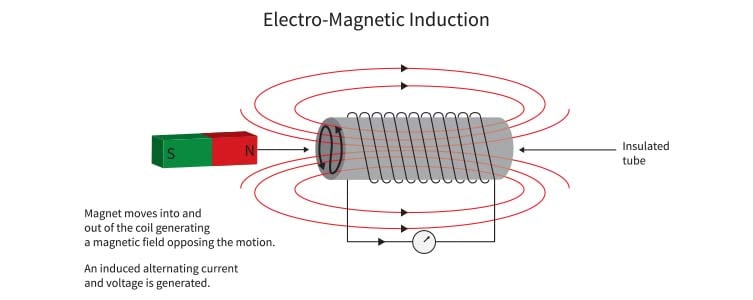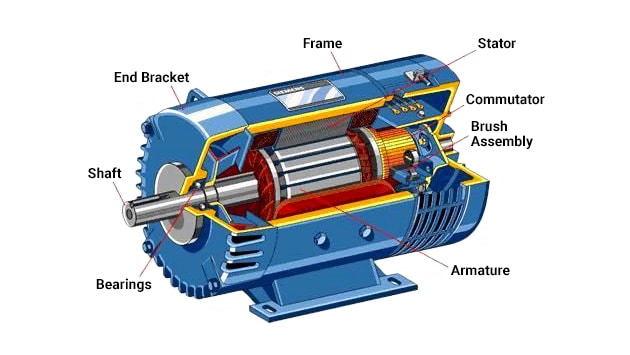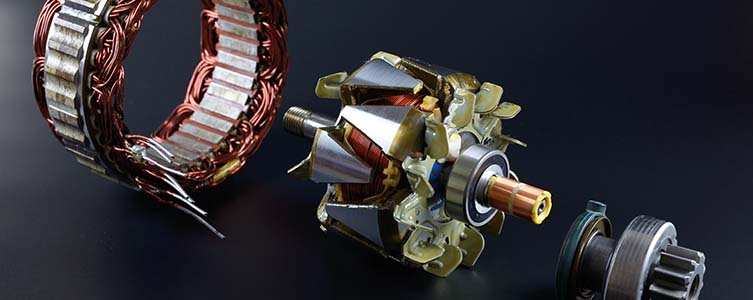
How Does a Generator Work?
There’s a lot of confusion when it comes to how generators work. Some people might view it as creating electricity out of nothing, but that’s not the case. In reality, it all comes down to engines, wires, and magnetism.
How Does a Generator Work?
An electric generator works by converting mechanical energy into electrical energy. It operates based on the electromagnetic induction principle, which is the creation of an electric current by moving a wire next to a magnet. Scientist Michael Faraday discovered this phenomenon in 1831 when, after moving a magnet through a loop of wire, he noticed that an electric current began in the wire.
For induction to produce a practical amount of electricity, though, you need a strong and consistent force moving the wire fast enough. That’s where the mechanical energy comes into play.
We can see mechanical energy creating electricity on a wind farm or hydroelectric dam, in which case the wind and water respectively provide the necessary mechanical force to generate meaningful electric current. In solar applications, energy from the sun's rays is converted into electricity.
In a gas-powered generator, an internal combustion engine provides the mechanical force needed to generate a current. The engine spins a shaft which rotates an electromagnet (armature). The rotating armature spins inside a stationary magnetic field (stator) to produce electrical current through copper wiring. Essentially, the engine drives a rotating shaft that turns the armature and produces electricity - just like hand crank flashlights except on a much larger scale.
Parts of a Generator
Here are the different parts of a generator and how they work together to produce electricity.
- Frame - Shields electrical and moving parts. Keeps dirt and moisture out.
- Rotating Shaft - Connects to the engine motor or propellers in wind/water generators and spins the armature inside the stator.
- Stator - A stationary magnetic field with large copper windings.
- Armature - Creates electromagnetic induction by spinning inside the stator of opposing magnetism.
- Bearings - Reduce friction caused by the rotation.
- Field Windings - A coil that creates a magnetic field through which current flows.
- Commutator - A conductor through which electricity collects.
- Brush Assembly - Rubs against the commutator that sends electrical current out.

Alternator vs Generator
You might be wondering as to the difference between an alternator and generator. Although similar in design and principle, there are a few distinctions:
- The most significant difference is in design. While generators feature a stationary field in which the armature rotates to produce electromagnetic induction, an alternator's entire magnetic field turns with its conductors remaining stationary.
- Generators are capable of both AC and DC power. Alternators usually are made for A/C (alternating current) applications, hence the name "alternator."
- The inherent design differences allow generators to produce immense amounts of wattage per kilowatt and are, therefore, much more substantial. Likewise, alternators tend to be more economical, use fewer parts, and used in smaller load applications like automobiles.
"But doesn't an alternator go inside a generator?" Sort of. Sometimes "alternator" generically refers to the joining of a rotor and stator as a part and not a standalone alternator.
Learn More
As mentioned earlier, this intro to how generators work was specifically about gas-powered types. To learn more about different types of generators, check out our How-To Library.

